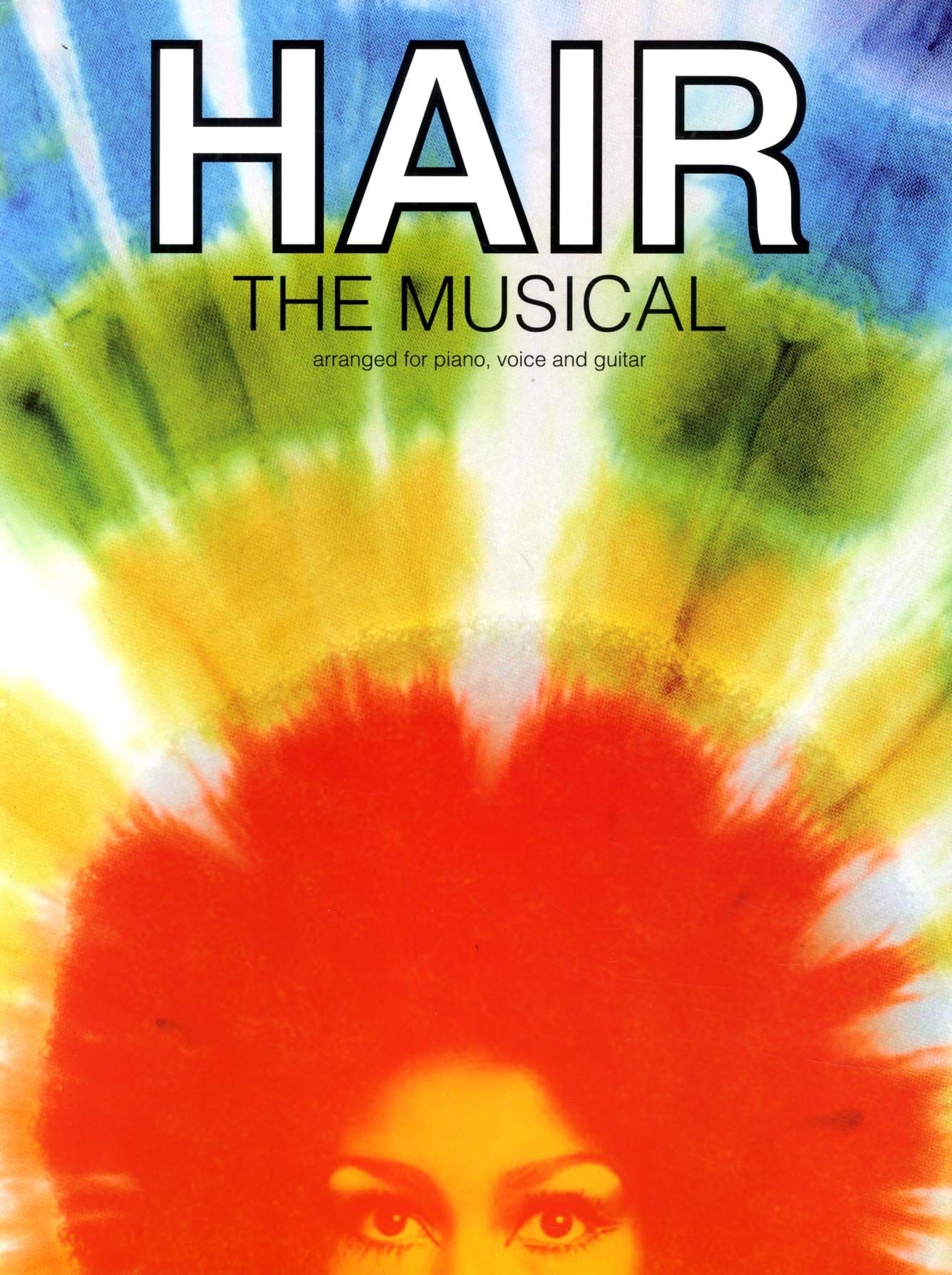Blog
Cornelius “Johnny” Hodges (July 25, 1907 – May 11, 1970) was an American alto saxophonist, best known for solo work with Duke Ellington‘s big band. He played lead alto in the saxophone section for many years. Hodges was also featured on soprano saxophone, but refused to play soprano after 1946. He is considered one of the definitive alto saxophone players of the big band era (along with Benny Carter).
After beginning his career as a teenager in Boston, Hodges began to travel to New York and played with Lloyd Scott, Sidney Bechet, Luckey Robertsand Chick Webb. When Ellington wanted to expand his band in 1928, Ellington’s clarinet player Barney Bigard recommended Hodges. His playing became one of the identifying voices of the Ellington orchestra. From 1951 to 1955, Hodges left the Duke to lead his own band, but returned shortly before Ellington’s triumphant return to prominence – the orchestra’s performance at the 1956 Newport Jazz Festival.
Hodges was born in the Cambridgeport neighborhood of Cambridge, Massachusetts, to John H. Hodges and Katie Swan Hodges, both originally from Virginia. After moving for a short period of time to North Cambridge, the family moved to Hammond Street in the South End of Boston, where he grew up with baritone saxophonist Harry Carney, and saxophonists Charlie Holmes and Howard E. Johnson. His first instruments were drums and piano. While his mother was a skilled piano player, Hodges was mostly self-taught.
more...HAIR songs performed by Theatre 55 tonight Saturday 7-24-21 at 7pm. Music by Victor Zupanc, Jamie Carter, Devon Olson and mick laBriola
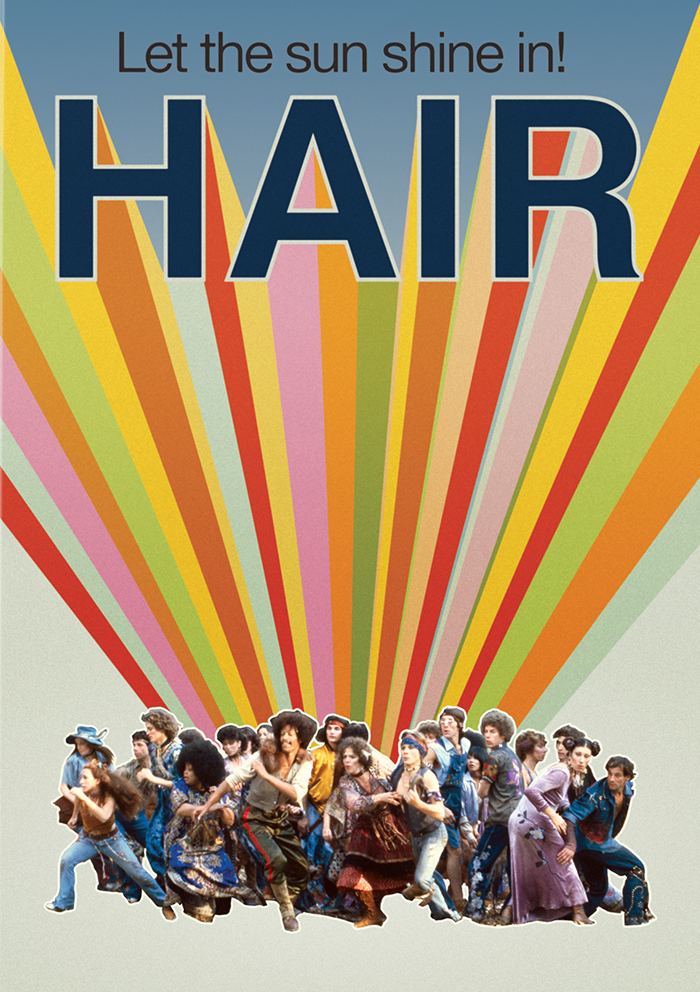
The centre of this image from the NASA/ESA Hubble Space Telescope is framed by the tell-tale arcs that result from strong gravitational lensing, a striking astronomical phenomenon which can warp, magnify, or even duplicate the appearance of distant galaxies. Gravitational lensing occurs when light from a distant galaxy is subtly distorted by the gravitational pull of an intervening astronomical object. In this case, the relatively nearby galaxy cluster MACSJ0138.0-2155 has lensed a significantly more distant quiescent galaxy — a slumbering giant known as MRG-M0138 which has run out of the gas required to form new stars and is located 10 billion light years away. Astronomers can use gravitational lensing as a natural magnifying glass, allowing them to inspect objects like distant quiescent galaxies which would usually be too difficult for even Hubble to resolve. This image was made using observations from eight different infrared filters spread across two of Hubble’s most advanced astronomical instruments: the Advanced Camera for Surveys and the Wide Field Camera 3. These instruments were installed by astronauts during the final two servicing missions to Hubble, and provide astronomers with superbly detailed observations across a large area of sky and a wide range of wavelengths.
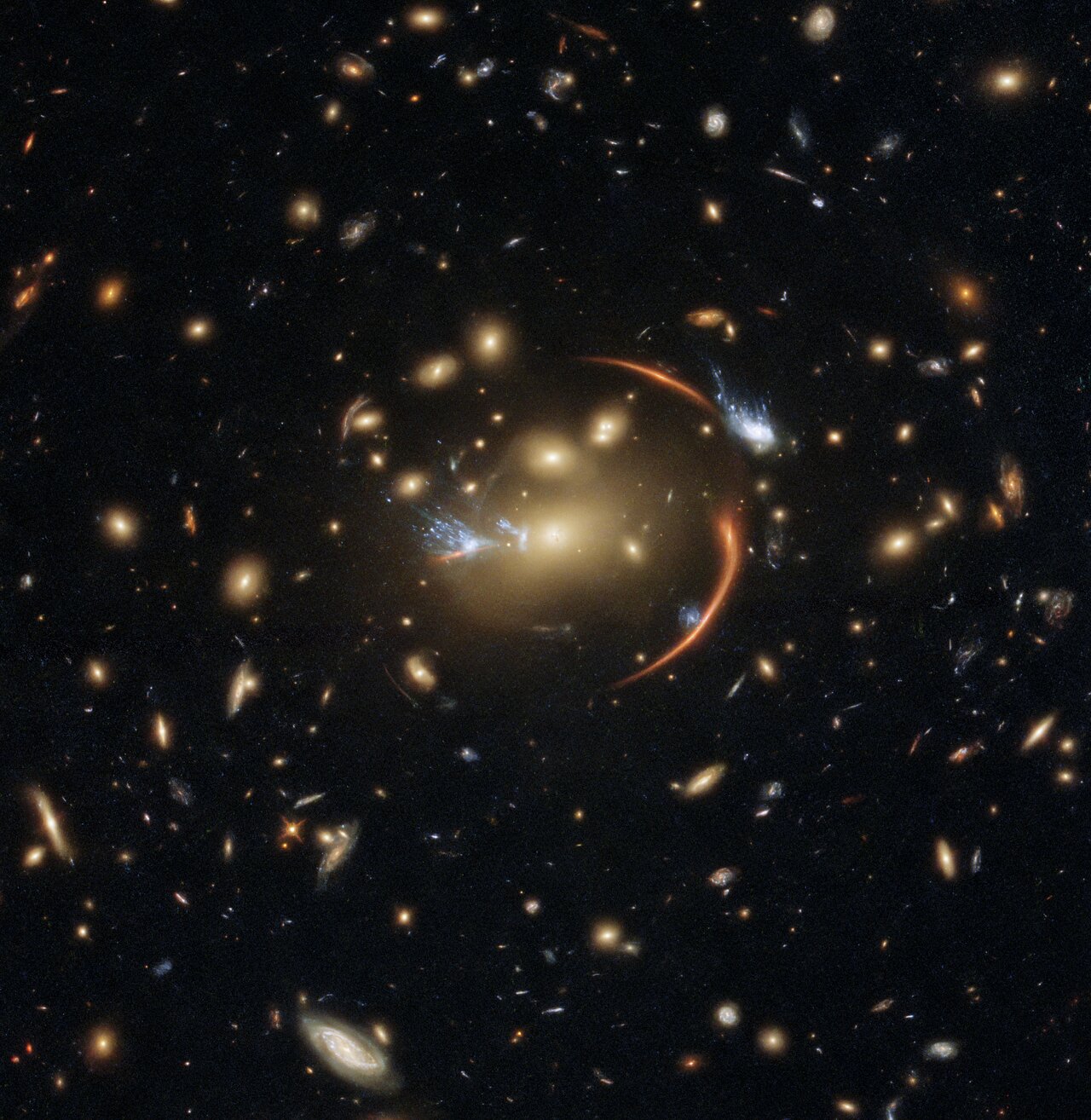
Jon Faddis (born July 24, 1953) is an American jazz trumpet player, conductor, composer, and educator, renowned for both his playing and for his expertise in the field of music education. Upon his first appearance on the scene, he became known for his ability to closely mirror the sound of trumpet icon Dizzy Gillespie, who was his mentor along with pianist Stan Kenton and trumpeter Bill Catalano.
Jon Faddis was born in Oakland, California, in 1953. At 18, he joined Lionel Hampton‘s big band before joining the Thad Jones/Mel Lewis Orchestraas lead trumpet. After playing with Charles Mingus in his early twenties, Faddis became a noted studio musician in New York City, appearing on many pop recordings in the late 1970s and early 1980s.
more...Charles McPherson (born July 24, 1939) is an American jazz alto saxophonist born in Joplin, Missouri, and raised in Detroit, Michigan, who worked intermittently with Charles Mingus from 1960 to 1974, and as a performer leading his own groups.
McPherson also was commissioned to help record ensemble renditions of pieces from Charlie Parker on the 1988 soundtrack for the film Bird.
more...Billy Taylor (July 24, 1921 – December 28, 2010) was an American jazz pianist, composer, broadcaster and educator. He was the Robert L. Jones Distinguished Professor of Music at East Carolina University in Greenville, and from 1994 was the artistic director for jazz at the John F. Kennedy Center for the Performing Arts in Washington, D.C.
A jazz activist, Taylor sat on the Honorary Founders Board of The Jazz Foundation of America, an organisation he founded in 1989, with Ann Ruckert, Herb Storfer and Phoebe Jacobs, to save the homes and the lives of America’s elderly jazz and blues musicians, later including musicians who survived Hurricane Katrina.
Taylor was a jazz educator, who lectured in colleges, served on panels and travelled worldwide as a jazz ambassador. Critic Leonard Feather once said, “It is almost indisputable that Dr. Billy Taylor is the world’s foremost spokesman for jazz.”
Taylor was born in Greenville, North Carolina, but moved to Washington, D.C., when he was five years old. He grew up in a musical family and learned to play different instruments as a child, including guitar, drums and saxophone. He was most successful at the piano, and had classical piano lessons with Henry Grant, who had educated Duke Ellington a generation earlier. Taylor made his first professional appearance playing keyboard at the age of 13 and was paid one dollar.
more...The XXXII Olympiad labeled Olympic Games Tokyo 2020 have begun with the Ceremony broadcast this morning in USA. With absolutely no audience members attending because of COVID the games are moving on, unprecedented and remarkable! I honor the Olympics as one of the most Positive Events in the entire world. Bringing together all cultures of people together to Celebrate Life without politics, judgement, bias, violence, manipulation, racism, disease or devastation. Love It.

Carei Thomas composer, pianist and mentor Memorial Concert Friday 7-23-21 6-9pm at VA Park in the VA Pavilion at 6335 Portland Ave, Richfield, MN 55423. Performance with ANCESTOR ENERGY, Todd Harper, Zeitgeist and Douglas Ewart.
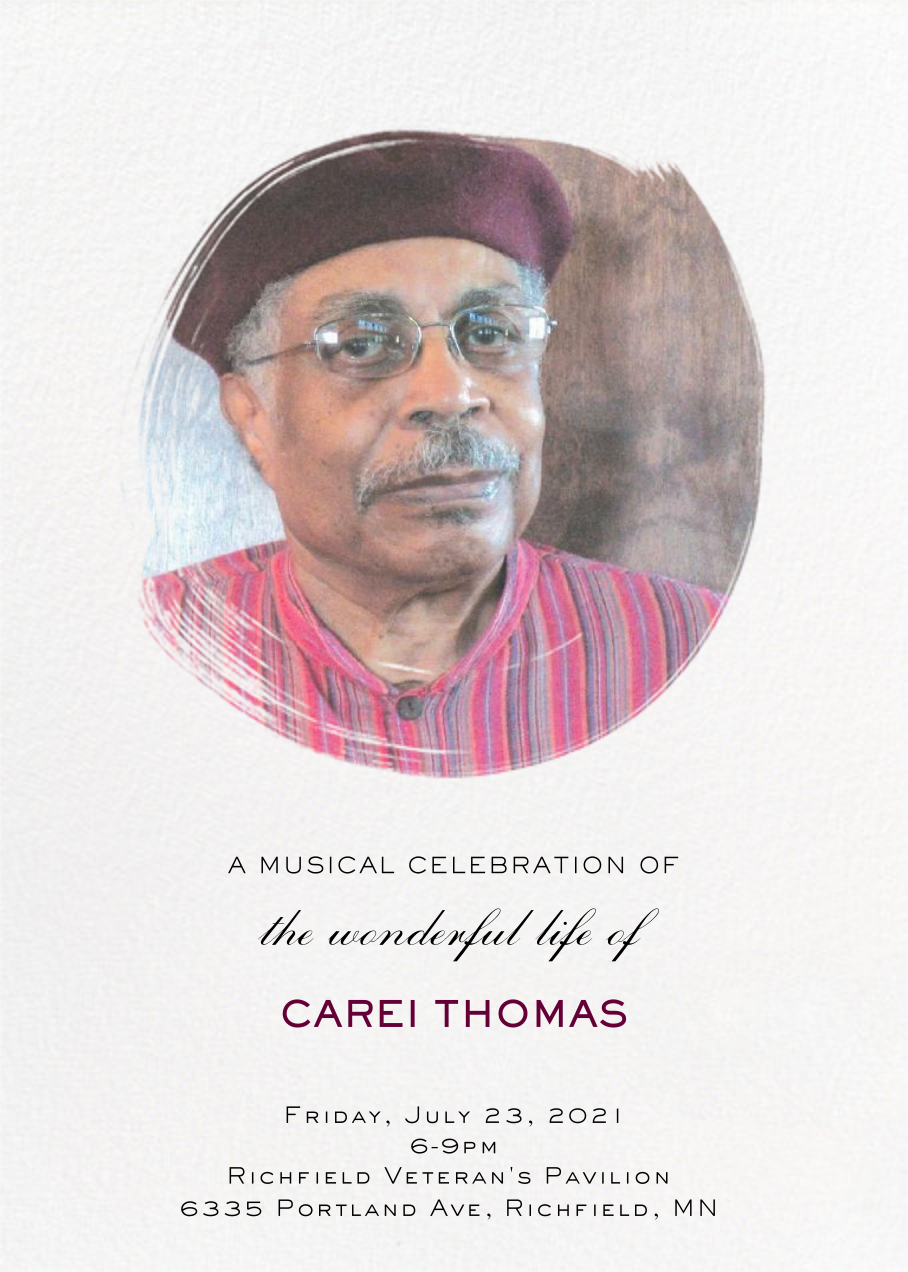
more...
HAIR by Theatre 55 performing tonight @ 7pm, Saturday 7pm and Sunday 3pm at Caponi Art Park. Music by Victor Zupanc, Jamie Carter, Devon Olson and mick laBriola.
more...
Sprawling emission nebulae IC 1396 and Sh2-129 mix glowing interstellar gas and dark dust clouds in this 10 degree wide field of view toward the northern constellation Cepheus the King. Energized by its bluish central star IC 1396 (left) is hundreds of light-years across and some 3,000 light-years distant. The nebula’s intriguing dark shapes include a winding dark cloud popularly known as the Elephant’s Trunk below and right of center. Tens of light-years long, it holds the raw raw material for star formation and is known to hide protostars within. Located a similar distance from planet Earth, the bright knots and swept back ridges of emission of Sh2-129 on the right suggest its popular name, the Flying Bat Nebula. Within the Flying Bat, the most recently recognized addition to this royal cosmic zoo is the faint bluish emission from Ou4, the Giant Squid nebula.
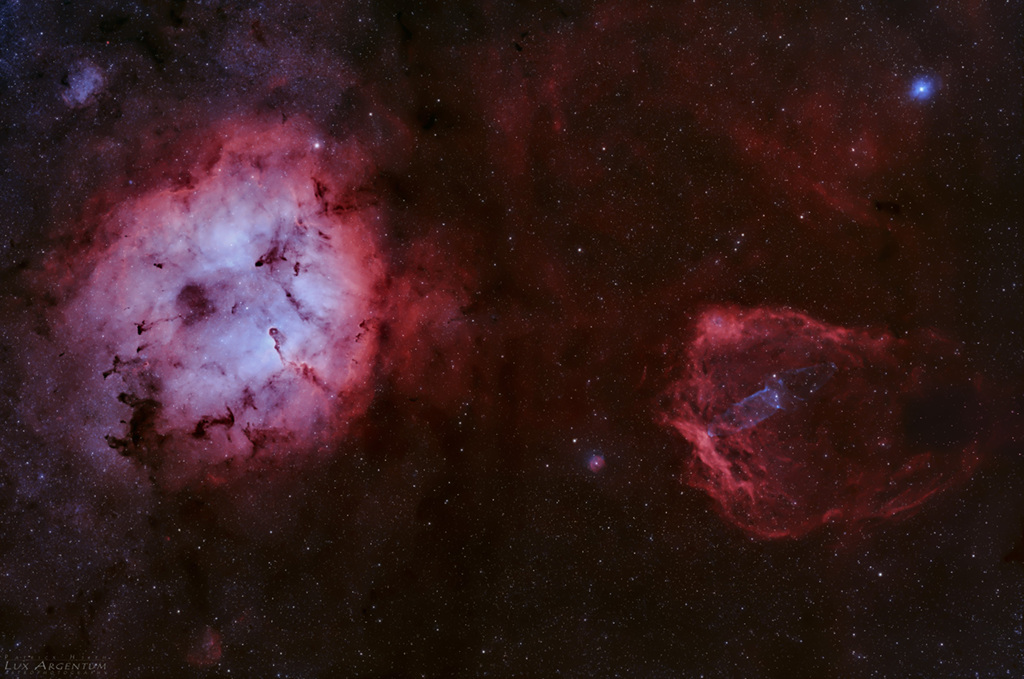
Lakshminarayana Subramaniam (born 23 July 1947) is an Indian violinist, composer and conductor, trained in the classical Carnatic music Subramaniam was born to V. Lakshminarayana Iyer and Seethalakshmi, both accomplished musicians. He lived in Jaffna during his younger years, taking up music studies before the age of five. He began training in violin under the tutelage of his father, Professor V. Lakshminarayana. “Mani”, as he is fondly known by fellow musicians and his family, gave his first public performance at the age of six.
His uncles include Ramnad Raghavan and Ramnad Krishnan. His brothers are also acclaimed musicians, and include the violinist-composers L. Shankar (alias. Shenkar), and the late L. Vaidyanathan. He has released recordings with both.
more...Steve Lacy (July 23, 1934 – June 4, 2004), born Steven Norman Lackritz in New York City, was an American jazz saxophonist and composer recognized as one of the important players of soprano saxophone. Coming to prominence in the 1950s as a progressive dixieland musician, Lacy went on to a long and prolific career. He worked extensively in experimental jazz and to a lesser extent in free improvisation, but Lacy’s music was typically melodic and tightly-structured. Lacy also became a highly distinctive composer, with compositions often built out of little more than a single questioning phrase, repeated several times.
The music of Thelonious Monk became a permanent part of Lacy’s repertoire after a stint in the pianist’s band, with Monk’s songs appearing on virtually every Lacy album and concert program; Lacy often partnered with trombonist Roswell Rudd in exploring Monk’s work. Beyond Monk, Lacy performed the work of jazz composers such as Charles Mingus, Duke Ellington and Herbie Nichols; unlike many jazz musicians he rarely played standard popular or show tunes.
more...William Thomas “Champion Jack” Dupree (July 23, 1909 or July 4, 1910 – January 21, 1992) was an American blues and boogie-woogie pianist and singer. His nickname was derived from his early career as a boxer.
Dupree was a New Orleans blues and boogie-woogie pianist, a barrelhouse “professor”. His father was from the Belgian Congo and his mother was part African American and Cherokee. His birth date has been given as July 4, July 10, and July 23, 1908, 1909,[1] or 1910; the researchers Bob Eagle and Eric LeBlanc give July 4, 1910.
He was orphaned at the age of eight and sent to the Colored Waifs Home in New Orleans, an institution for orphaned or delinquent boys (about six years previously, Louis Armstrong had also been sent to the Home, after being arrested as a “dangerous and suspicious character”).[3] Dupree taught himself to play the piano there and later apprenticed with Tuts Washington and Willie Hall,[4][5] whom he called his father and from whom he learned “Junker’s Blues“. He was also a “spy boy” for the Yellow Pocahontas tribe of the Mardi Gras Indians. He soon began playing in barrelhouses and other drinking establishments.
more...Reflecting its origin as a remate to the soleares, the underlying form of bulerías is simple. Bulerías cantes consist of three or four eight-syllable lines, and there is great flexibility in the way artists choose to treat those three or four lines. The singer may give one or two compáses to each line, or they can stretch them out, decorating each syllable with melismatic flourishes, or repeating them for rhythmic or emotional effect.
The guitarist follows the singer’s phrasing, underscoring the implied harmony, adding falsetas and maintaining the rhythmic pulse. Performing without a singer, a guitarist will string together a series of falsetas in a way that may imitate the form of letras.
A dancer will usually dance while the letra is being sung, and also dance between letras. A dancer can also dance during short breaks within the letras (a respira for the singer; a remate for the dancer). A dancer will use transitional phrases, including palmas en contra tiempo, remates and llamadas, and desplante llamadas to move from one section of the dance to another, cueing the musicians at each transition.
There are distinctive differences in dance styles for the bulerías depending on where and when the dance is performed. If it is a professional performance at a concert or theatrical show, the dancer will include 1 to 2 letras, add an escobilla, and perform an ornate traveling exit, the salida (also often called the cierre). If the dancer is performing bulerías at a flamenco party (juerga), small event, or with family and friends, the dance takes on a more personal touch that may or may not include all of the above named sections. See below for a more detailed description of each section of the dance.
more...https://www.youtube.com/watch?v=i1RI26jMFRU
more...Point your telescope toward the high flying constellation Pegasus and you can find this expanse of Milky Way stars and distant galaxies. NGC 7814 is centered in the pretty field of view that would almost be covered by a full moon. NGC 7814 is sometimes called the Little Sombrero for its resemblance to the brighter more famous M104, the Sombrero Galaxy. Both Sombrero and Little Sombrero are spiral galaxies seen edge-on, and both have extensive halos and central bulges cut by a thin disk with thinner dust lanes in silhouette. In fact, NGC 7814 is some 40 million light-years away and an estimated 60,000 light-years across. That actually makes the Little Sombrero about the same physical size as its better known namesake, appearing smaller and fainter only because it is farther away. In this telescopic view from July 17, NGC 7814 is hosting a newly discovered supernova, dominant immediately to the left of the galaxy’s core. Cataloged as SN 2021rhu, the stellar explosion has been identified as a Type Ia supernova, useful toward calibrating the distance scale of the universe.
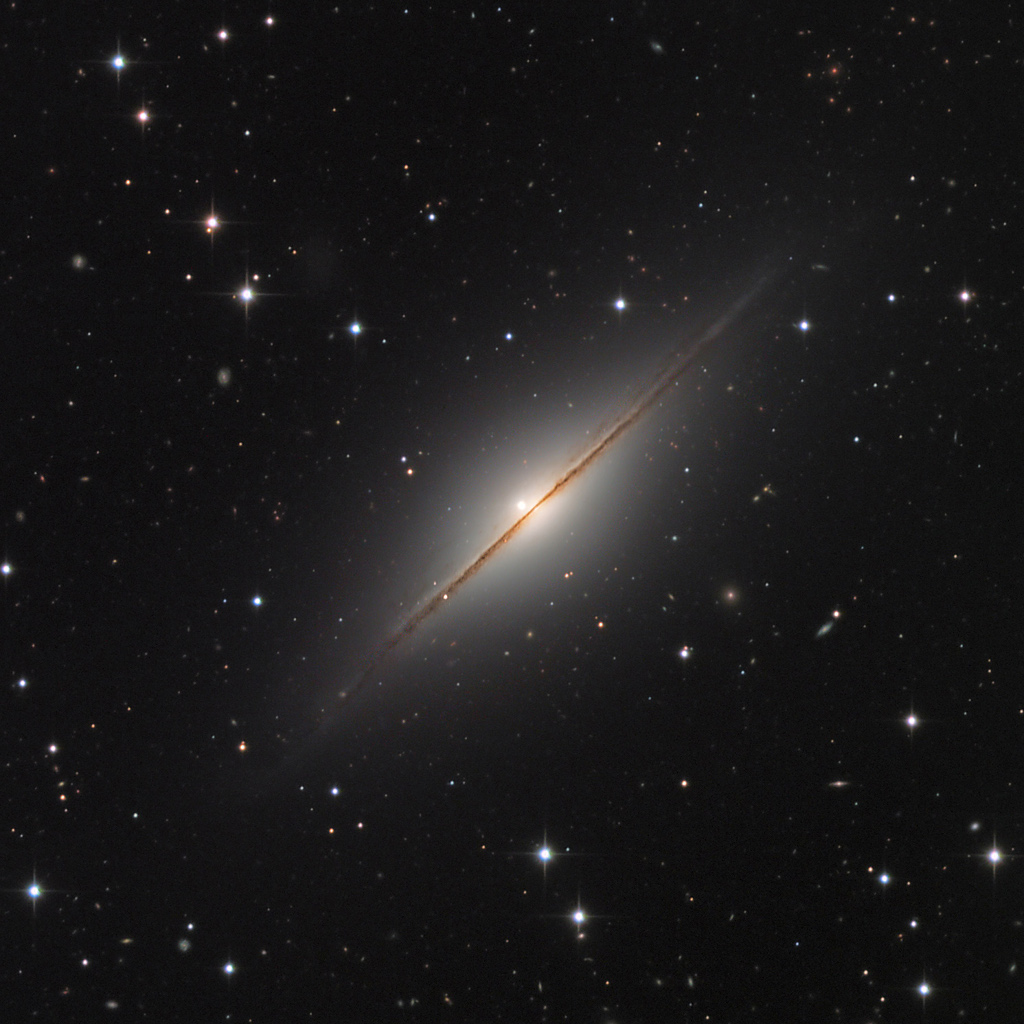
Albert Laurence Di Meola (born July 22, 1954) is an American guitarist. Known for his works in jazz fusion and world music, he began his career as a guitarist of the group Return to Forever in 1974. Between the 1970s and 1980s, albums such as Elegant Gypsy and Friday Night in San Franciscoearned him both critical and commercial success.
Born in Jersey City, New Jersey, into an Italian family with roots in Cerreto Sannita, a small town northeast of Benevento, Di Meola grew up in Bergenfield, where he attended Bergenfield High School.He has been a resident of Old Tappan, New Jersey.
When he was eight years old, he was inspired by Elvis Presley and the Ventures to start playing guitar. His teacher directed him toward jazz standards. He cites as influences jazz guitarists George Benson and Kenny Burrell and bluegrass and country guitarists Clarence White and Doc Watson.
He attended Berklee College of Music in the early 1970s. At nineteen, he was hired by Chick Corea to replace Bill Connors in the pioneering jazz fusion band Return to Forever with Stanley Clarke and Lenny White. He recorded three albums with Return to Forever, helping the quartet earn its greatest commercial success as all three albums cracked the Top 40 on the U.S. Billboard pop albums chart. He could play so fast, that he was sometimes criticized for playing too many notes.
As Return to Forever was disbanding around 1976, Di Meola began recording solo albums on which he demonstrated mastery of jazz fusion, flamenco, and Mediterranean music. His album Elegant Gypsy (1977) received a gold certification. In 1980 he recorded the acoustic live album Friday Night in San Francisco with Paco de Lucía and John McLaughlin.
more...More Posts
- Jack Casady Day
- Eddie Marshall Day
- Bud Freeman Day
- World Music with Uilleann Piping
- Daily Roots with the Twinkle Brothers
- Music for Surviving the Pandemic
- Happy Easter 2020
- The Cosmos with Barnard 33
- Herbie Hancock Day
- Shakey Jake Day
- Hound Dog Taylor Day
- World Music with Kudsi Erguner
- Daily Roots with Trinity 7
- Happy Passover 2020
- Music for Surviving the Pandemic
- The Cosmos with NGC 3147
- Richard Berry Day
- Luther “Guitar Junior” Johnson Day
- John Levy Day
- World Music with Damir Imamović
